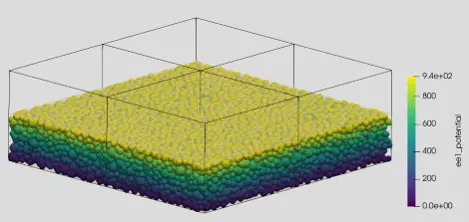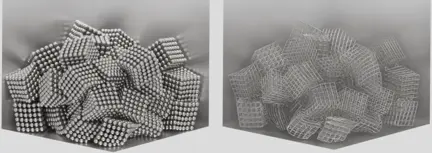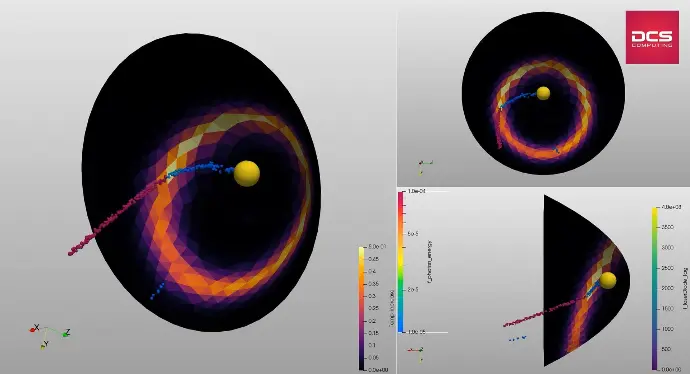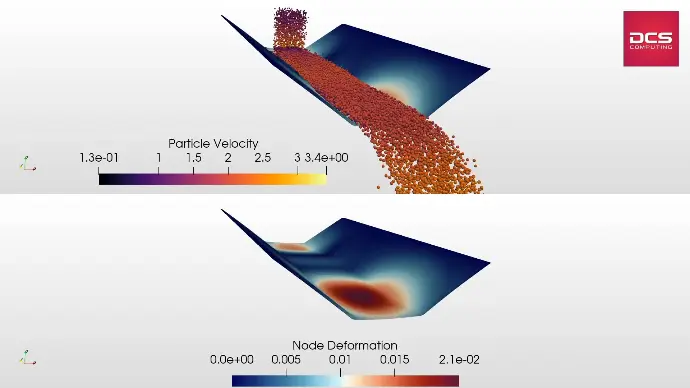Post-Simulation Evaluation
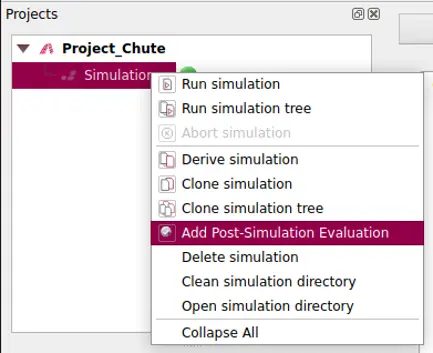
Missed a massflow-measurement or residence timecalculation in your simulation set up?
No problem with this new feature:
Extract additional data by running calculationsbased on the results of completed simulations
Available for
- massflow calculation
- residence time calculation
- spatial averaging
Representations of Photons and Lasers
Aspherix® now supports the simulation of photon interactions with meshes and particles! This powerful new capability enables advanced modeling of light behavior in complex systems.
Available reflection laws include:
- Fresnel
- Fresnel (unpolarized)
- Schlick
In the video you see the heating of a parabolic mirror due to laser reflection. Each laser beam is simulated by distinct photons, providing realistic and high-fidelity results.
Improved Usability of DEM-FEM Coupling
The DEM-FEM coupled solver in Aspherix® has been significantly improved to support more efficient and robust simulations of particle–structure interactions.
Updates include:
- Improved computational performance and numerical stability
- Support for parallel direct method simulations
- Updated tutorials for streamlined implementation
The video illustrates the interaction between bulk material and a deformable chute using FEM-DEM coupling between Aspherix® and Elmer, highlighting the solver’s enhanced capabilities in realistic scenarios.
New Stress-Calculation Functionality
A newly introduced feature enables the computation of the stress tensor at the particle level. This functionality facilitates detailed stress analysis within particulate systems.
The example shows the comparison of averaged plane and normal stresses in a simulated shear cell.
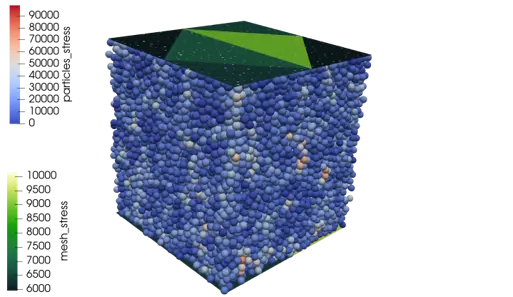
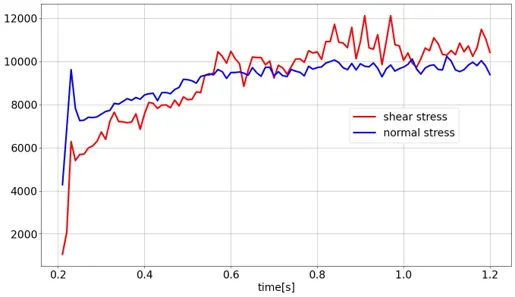
New Tutorials
Several new tutorial cases have been added to support recent feature enhancements and broaden application coverage. These include:
- Flexible particles: deformable cubes modeled using bonded particle assemblies
- Impact-induced battery heating: illustrating thermal effects due to mechanical impacts
- Using lasers in DEM simulations: demonstrating the integration of photon interactions
These examples are designed to assist users in applying the latest functionalities within practical simulation scenarios.
